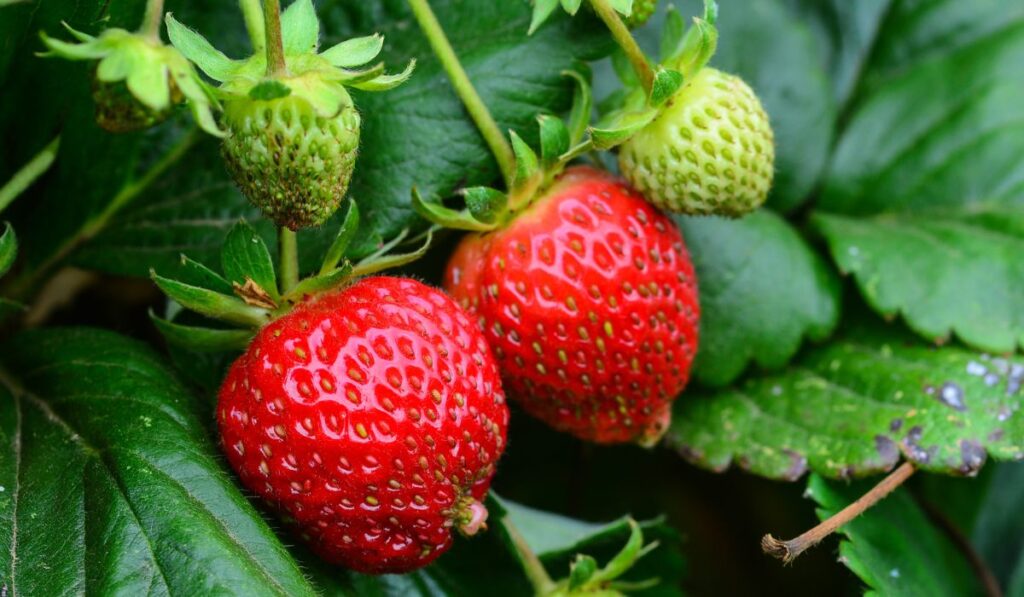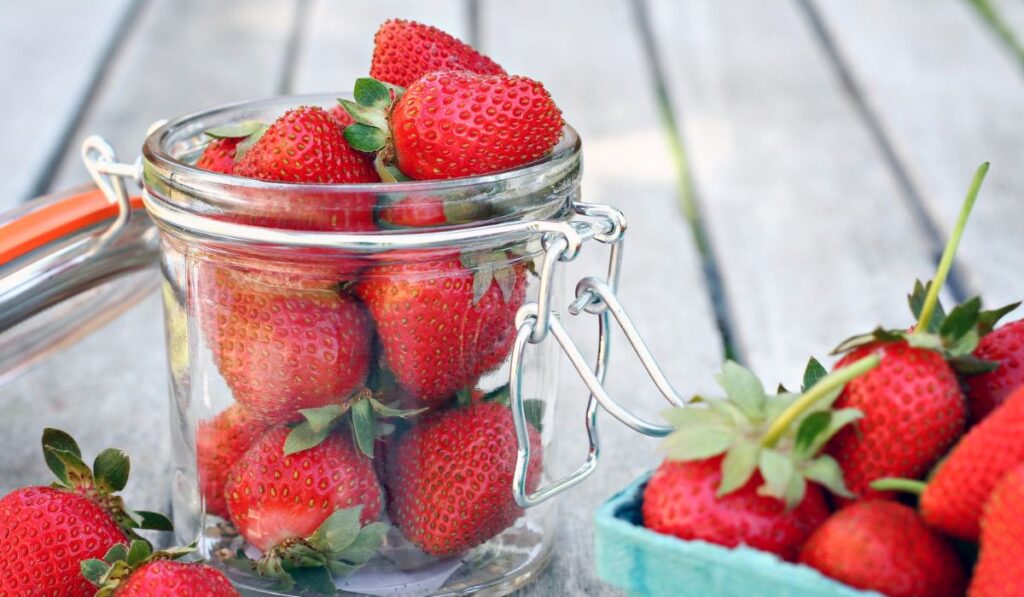There’s no better way to celebrate the end of a cold, dreary winter than biting into a sweet, juicy strawberry. After months of frigid, crisp days, the earth rewards us with a fresh start and a completely new growing season. But when do strawberries actually ripen, and how soon can you have them?
Strawberries ripen during summer and spring, with June being the best month to buy the fruit. However, the ideal time varies with the locality. You can find quality strawberries in grocery stores and farmers’ markets — just make sure you don’t wash them until you’re ready to enjoy them.
Strawberry desserts are almost always a crowd-pleaser, while strawberry salads make for a mouth-watering appetizer at spring parties. To give you a head start on the preparation of all your strawberry dishes, let’s look at where strawberries come from, the best time to buy them, how to find the best ones, and how you can store the delicious fruit.
Where Do Most Strawberries Come From?

In the United States, most strawberries are grown in California and Florida, but you’ll also find many growers in New York, Oregon, North Carolina, and Washington.
The development of newer strawberry varieties has also expanded the strawberry season in both Florida and California. In fact, California produces strawberries almost year-round, though its peak harvest season spans from early spring to fall.
What Is the Best Month to Buy Strawberries?
Generally, strawberries ripen in the spring and summer, and in most states, June is the best month to buy strawberries. However, it’s important to note that the ideal time varies according to your locality and the USDA’s hardiness zones.
In Florida, the strawberry season can arrive as early as the last days of February. The Deep South follows behind that, with peak strawberry season in Georgia, Mississippi, and Alabama spanning from late April to May.
The fruit may not ripen in the Mid-South, namely in Arkansas, North Carolina, and Tennessee, until late May or mid-June. Meanwhile, the strawberry season in the mountainous and mid-Atlantic regions signals the start of summer, as the delectable berry only ripens after the start of June.
The entire season lasts for around three weeks, depending on the temperature. Rain, snow, or generally lower temperatures can slow down the ripening process, while higher temperatures can speed it up.
Strawberries in Winter
While strawberries generally ripen in spring and summer, you can still find the fruit in stores during winters. States like California and Florida do supply big, beautiful strawberries to the entire country during the off-peak growing seasons, but these berries just don’t have the true taste of in-season strawberries.
Bigger berries usually hold more water, which diminishes their sweetness and makes them lose their slight tartness. On the other hand, smaller berries, like those grown in peak strawberry season, give a lovely, more concentrated burst of flavor with each bite.
Nonetheless, they’re usually softer, which makes them difficult and more expensive to transport.
So while you can have fresh strawberries in winter, you won’t be able to enjoy the perfect balance of sweetness and tartness that’s usually provided by in-season fruit.
Of course you can also enjoy strawberries in other forms during the off-season. Natierra’s Organic Freeze-Dried Strawberries (on Amazon) make a great snack or addition to cereal, and Crofters Strawberry Spread (also on Amazon) will satisfy any sweat tooth.
How to Find the Best Strawberries
If you’ve waited all winter for a bite of the juicy, flavorful strawberries of summer and spring, you won’t be satisfied until you find the perfect batch. You can easily find high-quality strawberries in grocery stores or your local farmers’ market — just make sure you pick the ones that are bright red and have fresh, green tops.
Keep in mind that the fruit won’t ripen after it’s picked, so if you notice any green or white edges to the strawberries, try finding another batch. They won’t have the sweetness you’ve been waiting for, and they won’t ripen in the fridge or on the counter, like some other vegetables and fruits.
Whether you’re buying strawberries from the nearest grocery store or picking the best at a U-pick farm, it’s advisable to choose strawberries with the following characteristics:
- Smooth, shiny exterior
- Fresh and vibrant green stems
- Distinct strawberry scent
- Deep red color
- No blemishes
- Medium firmness and taut skin
How to Store Strawberries

Strawberries are incredibly delicate. They’re very difficult to transport, and they degrade quickly if they’re cut, mangled, or bruised. For this reason, it’s better to be gentle.
If you want to eat them right away, then just rinse, dry, and pop the strawberries into your mouth one by one.
However, if you’re planning on storing the strawberries and eating them at a later date, don’t wash them as soon as you bring them home. Washing the fruit introduces moisture, which can make them mushy and even promote mold growth.
Instead, take them out of the bucket, cardboard box, or plastic clamshell in which you’ve brought them home. Remove those that show signs of bruising or spoilage.
Then, line a glass food storage box or the original container with paper towels, and place the strawberries inside. These containers allow proper airflow, so they’ll keep your strawberries fresh until you’re ready to eat them.
